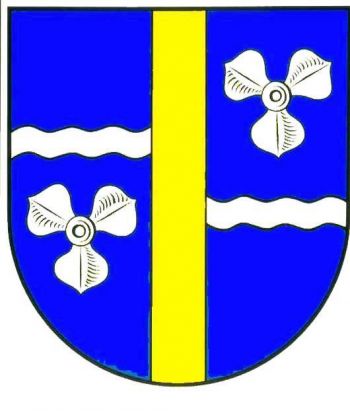Achterwehr: Difference between revisions
Knorrepoes (talk | contribs) No edit summary |
Knorrepoes (talk | contribs) m (Text replace - "[[Literature" to "{{media}} [[Literature") |
||
| Line 22: | Line 22: | ||
The flower is taken from the late medieval noble Schwabe family, the oldest known Lords of the village of Achterwehr. Th etype of flower and the colours of the original family arms are no longer known. The colours thus are those of Schleswig-Holstein. | The flower is taken from the late medieval noble Schwabe family, the oldest known Lords of the village of Achterwehr. Th etype of flower and the colours of the original family arms are no longer known. The colours thus are those of Schleswig-Holstein. | ||
{{media}} | |||
[[Literature]] : Reissmann, 1997 | [[Literature]] : Reissmann, 1997 | ||
Revision as of 17:29, 8 July 2014
| Heraldry of the World Civic heraldry of Germany - Deutsche Wappen (Gemeindewappen/Kreiswappen) |
ACHTERWEHR
State : Schleswig-Holstein
District (Kreis) : Rendsburg-Eckernförde (until 1970 Rendsburg)
Amt : Amt Achterwehr
Official blazon
In Blau ein goldener Pfahl, begleitet rechts von einer gesenkten, links von einer erhöhten silbernen Wellenleiste; über der rechten und unter der linken Wellenleiste jeweils eine silberne Blüte mit drei spatelförmigen, spitz auslaufenden Blütenblättern.
Origin/meaning
The arms were officially granted on February 5, 1981.
The golden pale and the two wavy bars represent the -wehr aprt of the name, which means a dike or other construction, which blocks a river and which results in a different water level on both sides of the dike.
The flower is taken from the late medieval noble Schwabe family, the oldest known Lords of the village of Achterwehr. Th etype of flower and the colours of the original family arms are no longer known. The colours thus are those of Schleswig-Holstein.
Contact and Support
Partners:
Your logo here ?
Contact us
© since 1995, Heraldry of the World, Ralf Hartemink 
Index of the site
Literature : Reissmann, 1997











